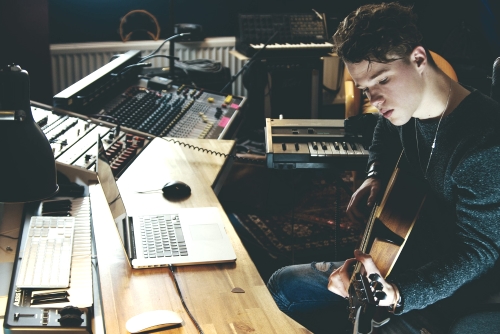Community, Leadership, Experimentation, Diversity, & Education
Pittsburgh Arts, Regional Theatre, New Work, Producing, Copyright, Labor Unions,
New Products, Coping Skills, J-O-Bs...
Theatre industry news, University & School of Drama Announcements, plus occasional course support for
Carnegie Mellon School of Drama Faculty, Staff, Students, and Alumni.
CMU School of Drama
Thursday, March 01, 2018
Audio Engineering From A Musical Perspective
ProSoundWeb: Musical instruments are the product of engineering, each one an expression of the level of technological sophistication achieved by the era and culture in which they were conceived. Many are also works of craftsmanship, of artistry, even works of art in their own right. Over time the musical instrument can become a visible representation of the technique and physical interaction provided by the musician, as wear patterns emerge from playing.
Subscribe to:
Post Comments (Atom)

2 comments:
That’s what I love about sound: the combination of art and technology. Recording music is so amazing. The audio engineer is responsible for taking the musicians vision into the reality for the general public to enjoy and be inspired by the musicians art. Their job is literally the science and the art combined. I think it would be so easy to get lost in the technical aspects of the recording and lose the art of it, and the article expressed this possibility and if that happens you are missing a part of the process. Another important thing stressed by this article is empathizing and understanding the musician as an artist. Musicians and audio engineers arts can speak a different language. The musician is concerned with the output pre microphone and the audio engineer is concerned with the process post microphone. This can cause a language barrier so if the audio technician can talk to the musician in their vocabulary and understand their process it will be better for the finished product which is what both parties want.
A couple weeks ago, in one of our sound stagecraft classes, we talked about different microphones and their uses. We tested to see if we could hear the differences by playing a piano and having different microphones capture that sound in different placements. In the end, we listened to all the recordings and took a poll of what we thought sounded the best. My opinion (for it was an opinion, not a right or wrong answer) was completely different than that of the rest of the class. The difference was that I was the one playing the piano. I, as the musician, wanted to hear the recording of the piano as I heard it as I played. Those positioning the microphones wanted to hear it as they heard it listening from a distance. Sarah reminded us that when recording and engineering for musicians, that that is a valid concern to take into account; how do we listen to all the voices in our head (the musician, the recording engineer, the producer) to get the best sound possible out of a recording?
Post a Comment